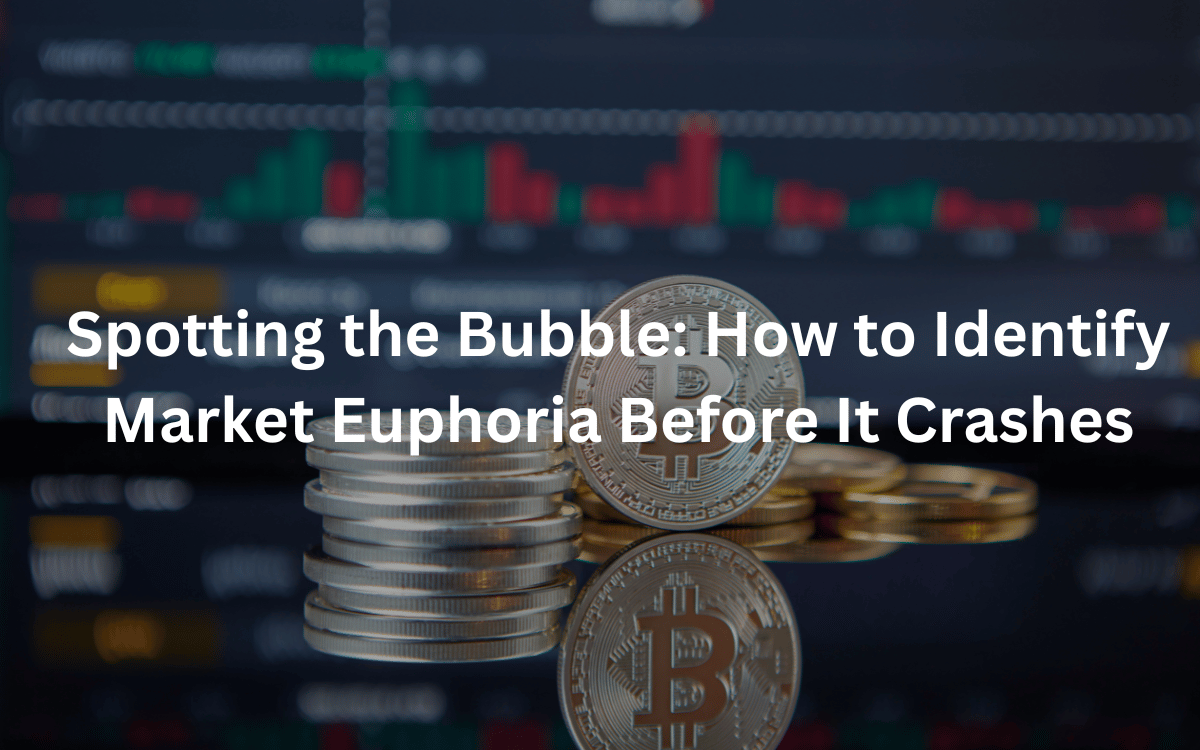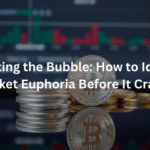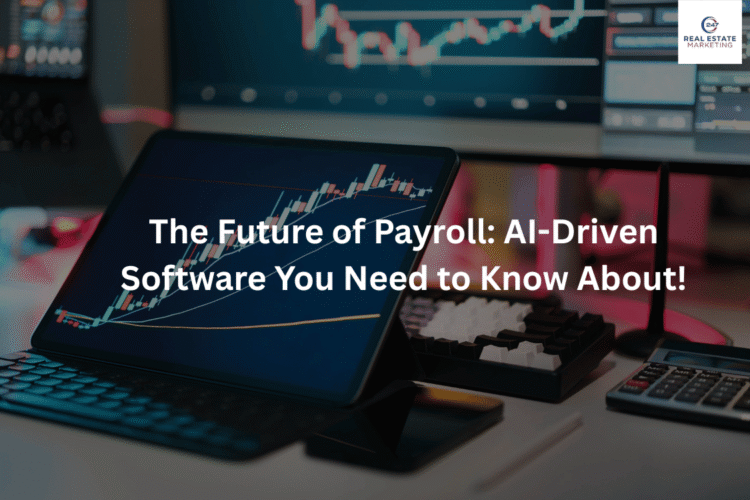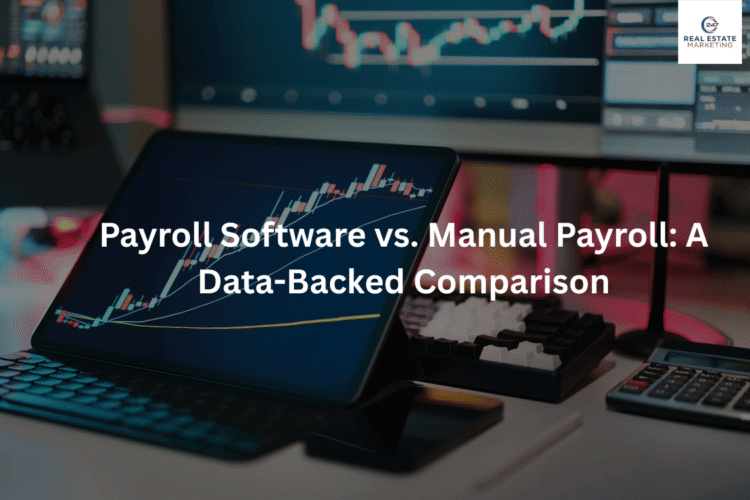
That’s the quiet truth behind almost every major boom in financial history. Before prices skyrocket, before euphoria spreads, before the frenzy grips retail traders and institutions alike there is always a story. A new technology. A new economic model. A new world.
Financial bubbles form when stories become fuel, when excitement outpaces fundamentals, and when markets convince themselves that the old rules no longer apply. And while the rise is intoxicating, the fall can be devastating. Understanding the Role of AI in Fintech is essential in navigating these cycles, as AI helps identify early warning signs, ground decisions in data, and reduce the impact of emotion-driven market swings.
Spotting a bubble before it bursts is one of the most important risk-management skills any investor can develop. In the context of a strong Fintech Marketing Strategy, understanding how bubbles form and how investors react to market noise becomes even more critical. This article dives deep into how bubbles emerge, what red flags to watch for, and how modern analytical tools like advanced trading platforms can help you stay rational when the market feels anything but rational.
What Exactly Is a Financial Bubble?
A financial bubble occurs when the market price of an asset rises far above its intrinsic value, often fueled by hype, easy money, and expectations of infinite growth.
Here’s the anatomy of a bubble:
1. Intrinsic Value Gets Ignored
Intrinsic value based on earnings, cash flow, business model quality becomes secondary.
Prices move because other people are buying, not because the underlying assets have improved.
2. Momentum Becomes the Main Driver
Late-cycle bubble rallies aren’t about fundamentals at all.
The psychology becomes:
“Prices are rising, so I should buy before they go even higher.”
This creates a reflexive loop momentum drives prices, which attracts more buyers, which increases momentum.
3. Leverage Pours Gasoline on the Fire
Borrowed money (margin debt, relaxed lending standards, high leverage) accelerates price gains.
But leverage also guarantees a violent crash when the trend reverses.
4. Narrative Replaces Analysis
In bubble stages, you hear phrases like:
- “This time is different.”
- “Old valuation metrics don’t apply.”
- “It can only go up from here.”
- “Everyone is getting rich don’t miss out.”
When collective psychology shifts from investing to speculating, the bubble is already inflating.
How Financial Bubbles Form: The Classic Pattern
Every major bubble follows a predictable structure. Economists call it the five-phase model:
1. Displacement (A spark)
A new technology, economic policy, or innovation appears:
- The Internet (dot-com boom)
- Ultra-low interest rates (2000–2008 credit bubble)
- Decentralized finance (crypto boom)
- Social-media-driven trading (meme stocks)
2. Boom (Early adopters make money)
Early investors profit.
Media amplifies success stories.
Confidence rises.
3. Euphoria (The bubble inflates)
This is where things get irrational:
- Prices rise far faster than earnings
- Market caps inflate without fundamentals
- People buy based on “FOMO” rather than analysis
- Leverage explodes
- Valuations break all historical norms
4. Profit-taking (Smarter moneyexists)
Pros and institutions start quietly selling, but retail investors continue buying the top.
5. Panic & Collapse
A small negative trigger causes massive unwinding, margin calls, forced liquidations, and cascading selloffs.
Historical Examples: What Past Bubbles Can Teach Us
Studying past bubbles is one of the best ways to spot future ones. Here are the essential lessons.
1. The Dot-Com Bubble (1997–2000)
When the Internet emerged, investors believed every online company was destined to dominate the future.
The warning signs were obvious in hindsight:
- Companies with no profits reached multibillion-dollar valuations
- P/E ratios exceeded 100 or 200+
- Media narratives promised a “new economic paradigm”
- Retail investors poured money into anything with “.com” in the name
When reality caught up, the NASDAQ crashed nearly 80%.
2. The 2008 Housing Bubble
Fueled by cheap credit and financial engineering, the U.S. housing market soared on:
- Extremely loose lending standards
- Subprime mortgages
- Complex derivatives (MBS, CDOs)
- A belief that “housing prices never fall”
3. Meme Stocks & Crypto (2020–2021)
A perfect storm of:
- Pandemic liquidity
- Zero-commission trading
- TikTok & Reddit hype
- Plus, extreme FOMO
The characteristics were textbook:
- Parabolic price charts
- Social-media-driven buying
- Retail investors using options for high leverage
- Low regard for fundamentals
When sentiment reversed, many assets crashed 70–90%.
Modern Indicators That Help Detect Bubbles Early
Today’s investors have better tools than ever before. The challenge is knowing how to interpret them.
Here are the most important modern warning signals:
1. Valuation Metrics
Price-to-Earnings (P/E) Ratio
When the average P/E ratio of an index climbs far above its long-term historical average, caution is warranted.
- S&P 500 historical average: 15–16
- Dot-com peak: 40+
- Current bubble warning zone: 30+
Shiller CAPE (Cyclically Adjusted P/E)
Smooths out earnings over 10 years for more accurate reading.
Historically, a CAPE above 30 has preceded sharp corrections.
2. Trading Volume & Volatility
Spikes in trading volume without corresponding improvements in fundamentals often indicate speculation.
Likewise, high volatility, especially in previously stable assets, suggests excessive leveraged trading and emotional decision-making.
3. Margin Debt Trends
Rising margin debt means traders are using more borrowed money.
Historically, U.S. margin debt has peaked just before major market crashes (2000, 2007, 2021).
If margin debt is making new highs, yet earnings are not, that’s a serious red flag.
4. Sentiment Indicators
Tools like:
- Fear & Greed Index
- AAII Investor Sentiment Survey
- Options put/call ratios
- Social media sentiment analysis
…provide insight into whether markets are driven by fear, greed, or hype.
Extreme levels of greed often align with bubble tops.
5. Macroeconomic Warning Signs
Bubbles often appear when asset prices outpace:
- Wage growth
- Productivity
- Corporate earnings
- Housing affordability metrics
- Consumer savings rates
If asset prices rise exponentially while the underlying economy grows slowly, the disconnect may signal a bubble.
How to Stay Rational When the Market Is Irrational
In a bubble, the biggest risk is psychological.
Staying rational requires discipline.
1. Ask the Right Question: “Who Is Buyingand Why?”
If the primary reason people are buying is:
- “It’s going up”
- “Everyone else is buying”
- “I don’t want to miss out”
…that’s speculation, not investing.
Healthy markets rely on fundamentals not hype.
2. Do Real Research (Far Beyond Headlines)
Read earnings reports.
Study cash flows.
Understand the business model.
Check insider transactions.
If the story doesn’t match the numbers, be cautious.
3. Diversify & Limit Leverage
Nothing destroys wealth faster than:
- Overconcentration in a single trend
- High leverage during a reversal
Diversification won’t prevent losses, but it prevents disasters.
4. Use Entry/Exit Rules & Risk Controls
Smart traders use:
- Stop-losses
- Trailing stops
- Predetermined profit-taking rules
- Position sizing discipline
Mechanical rules reduce emotional mistakes especially when markets go vertically.
How Real-Time Tools Help You Spot Bubbles Early
Modern trading platforms like 247 Fintech Marketing (or similar advanced platforms) can dramatically improve bubble detection and risk management.
Here’s how:
Real-Time Market Data
You get live:
- Price feeds
- Volume data
- Volatility metrics
- Order-book depth
These are essential for spotting abnormal speculative behavior.
Advanced Charting & Technical Analysis
Traders can monitor:
- Parabolic price movements
- RSI extremes
- Momentum divergences
- Unusual volume surges
- Multi-timeframe trends
These indicators often flash warnings before the decline begins.
Integrated News Feeds
Breaking macro or company news often sparks bubble reversals.
A good platform helps you see it instantly, not hours later.
Sentiment Tools
Some platforms integrate:
- Social sentiment
- Market mood indicators
- AI-powered hype detection
This is critical during euphoric phases where narrative overtakes reality.
Algorithmic Trading Bots
Bots offer:
- Consistent discipline
- Pre-set risk limits
- Automated exits
- Emotion-free execution
When human psychology becomes fragile, bots keep strategy intact.
Conclusion
Financial bubbles will always be part of market history, but they don’t have to define your investing journey. At a Fintech Marketing Agency, understanding how hype forms, how fundamentals get ignored, and how sentiment turns irrational is essential not just for investors but for the brands guiding them. The more you understand these dynamics, the better equipped you are to protect your capital. Use data, discipline, and the tools available to you to separate real opportunities from dangerous speculation. In the end, staying grounded when the market loses its footing is what turns average investors into resilient, long-term winners.
Author
Mitesh Patel
Mitesh Patel is the co-founder of 247 FinTech Marketing, LawFirm Marketing and a columnist. He helps companies like Emerson and other top Fortune 500 compnies to grow their revenue.






